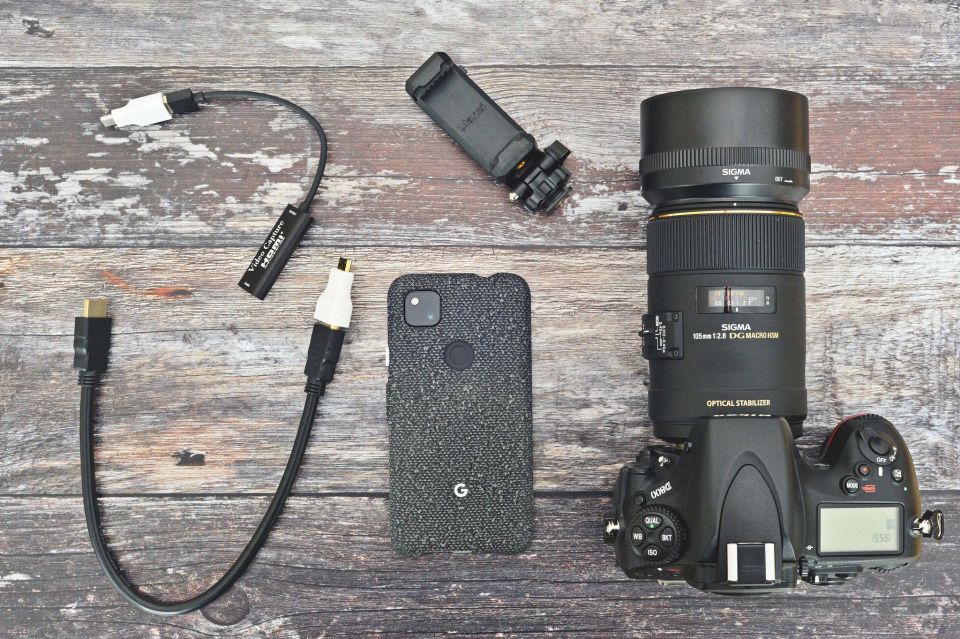Poor man's external camera monitor

Why spend money on an expensive external HDMI monitor for your camera when an Android device together with the right mix of cables and adapters can do the trick? Of course, if you are doing professional work that requires dedicated tools, then a proper external monitor justifies the expense. For the rest of us mere mortals, though, a slightly less elegant but inexpensive solution would do the job just fine.

What you need:
- Android device (obviously), preferably one with a USB-C connector. If you have an older device with a micro-USB connector, make sure it supports USB OTG. You can use the USB OTG Checker Compatible app to check whether your Android device is USB OTG-enabled.
- HDMI video capture card (like this one).
- USB-A to USB-C adapter to connect the video capture card to the Android device. If the latter has a micro-USB connector, you need a USB-A to micro-USB adapter instead.
- HDMI cable with a regular HDMI connector (to connect to the video capture card) on one end and an HDMI connector matching your camera on the other end.
- Optional HDMI to mini-HDMI (or any other connector matching your camera) adapter. It's required only if you have an HDMI cable with regular HDMI connectors on both ends.
- Optional hotshoe smartphone holder (like this one). It allows you to mount the Android device on the camera's hotshoe.
- USB Camera app.
Install the app on the Android device, assemble the cable, and use it to connect the device to the camera. Turn on the camera, and enable HDMI output, if necessary. The app should automatically start on the Android device. Grant the app the required permissions and you should see the video feed from your camera on the Android screen. If you use the described setup with a DSLR, you need to switch to Live Mode to stream the feed to the Android device.